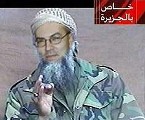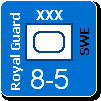Shannon V. OKeets
Posts: 22095
Joined: 5/19/2005
From: Honolulu, Hawaii
Status: offline

|
quote:
ORIGINAL: ullern
quote:
ORIGINAL: Shannon V. OKeets
Here is a problem I am working on fleshing out the answer to. What I want to achieve is a written description of the process for determining which CRT to use. I have made a small start on this and I am interested in your opinions as to how you make this decision. Most of this writeup is for when attacking. What needs to be different if you are defending?
The 3 Re is the level of difficulty I assigned to writing this rule (3: where 1 - easy and 5 - very hard). Re denotes that the the AIO has to Respond when asked this question.
===========
8.33 Resolve land combat - choose table (see RAC 11.16) (3 Re)
Calculate the expected results for both tables (Assault and Blitz). Results are pessimistic, expected, and optimistic results. The extremes occur 10% or less of the time. These 10% and 90% thresholds can be modified whenever appropriate (e.g., to 20% and 60%).
When attacking, possible goals are:
(1) to empty a hex so we can occupy it,
(2) to achieve a breakthrough,
(3) to kill enemy units,
(4) to preserve our own units,
(5) to disorganize enemy units, or
(6) to not disorganize our own units.
If the mode of attack (see below) is to push the enemy back, then the choice is between 1 and 2. If the mode of attack is to kill enemy units, then the choice is between 3 and 4. If the mode of attack is to disorganize the enemy, then the choice is between 5 and 6.
When defending, ...
======================
Tactical mode
What the Field Marshal (FM) needs to determine is which of 4 modes of attack to use:
(1) Destroy enemy units this impulse,
(2) Disorganize enemy units this impulse so they can be destroyed in a later impulse (or turn),
(3) Maneuver so better attacks can be made in the future, or
(4) Push the enemy back.
Maneuvering can change supply status for friendly and enemy units, increase the number of hexes from which to attack an enemy hex, and improve the selection of hexes from which to attack. In situations where the enemy has the ability to counterattack, maneuvering can improve the FM’s resulting defensive line at the end of his impulse.
The calculation of estimated results provides the expected changes (for both sides) to the front line. This includes kills and disorganizations. In addition to combat results, units can also become disorganized because they were committed during the impulse (e.g., air units). And disorganized units might be reorganized. When the impulse is over, the FM makes a new assessment, ‘B’, for each front line., and compares it to ‘A’.
By extrapolating the change from A to B over the remaining impulses in the turn, the FM judges whether disorganization is a viable tactic for the current turn. It works if the enemy units are mostly disorganized with no reorganization capability left while the FM still has a viable, organized, attacking force.
Direct attacks to kill enemy units is usually the best tactic but it might cause too many friendly casualties or disorganizations. Or, if the FM limits attacks to only those with excellent odds, it might be too slow. Yet again, maneuvering is rarely fast and there might not be enough impulses in the turn to use the disorganization tactic. The FM must be willing to accept that none of the modes will work as well as he would like and simply go with half measures, or no attacks at all.
I think your suggestion is quite good Steve.
And I would want to keep all the possibilities you have suggested.
The other arguments presented so far I feel is very Axis oriented, and early game (pre Barbarossa) oriented. And there are better ways if you are Allied.
If you are genuinly out to take out as many units as possible, assult is better also as an attacker. Sure if you get Blitz bonuses and the choice is between +8 blitz or +4 assult the choice is easy. But in many cases you don't get Blitz bonuses and the choice is between a +4 Blitz and a +4 assult. It's quite a different matter.
With the Allies I am often able to get a production ratio of 2:1 on the Axis. With such production ratio I am happy to accept +6 assult in small size attacks (max two hexes attacking - if not too many units flips), which I did quite a few of in my latestet Campaign, which I won.
Example:
With attacker prefered losses beeing (in order): MOT division, MIL, INF
With defender losses beeing (in order): INF, INF.
The average +6 assult would be: attacker 2.3 BP loss, defender 3.3 BP loss
The average +6 Blitz would be: attacker 1.2 BP loss, defender 1.4 BP loss.
If I am having 2:1 production ratio, doubling the attrition in combat would increase my strategic tempo, so much that I would accept quite a lot of additionally flipped units for the increased attrition and increased loss ratio.
_ As a defender this is usually even worse than what I picture here, since there second defender loss is often a high value unit like a ARM, MECH or HQ.
Disorganizing units also becomes important when dealing with OOS units. Ground striking the units is not always the best choice. Even Germany with excelent ground strikers are sometimes so pressed for air missions that they should seek other choices.
A more common use for disorganize, may be for fast moving fronts. If the Russians are running, a disorganized Russian is a dead Russian. A simple R results can be very valuable.
Thanks to everyone. I am still open to recomendations.
What might help the AIO decide, which no one really has the time to do over the board, is that the computer can work out precisely what the likely outcomes are going to be. It can converted probabily of die rolls into probable destroyed/retreated/disorganized/etc. results. That yields quantified likely results for choosing the Blitz versus the Assault CRT. This is similar to the BP losses you have calculated here.
_____________________________
Steve
Perfection is an elusive goal.
|
 Printable Version
Printable Version






 ), but it also has to be documented, correct?
), but it also has to be documented, correct? 



 But I changed the title for you just in case
But I changed the title for you just in case  I just wanted to try to get answers to the question I posed since it is something I want to figure out before the end of the week.
I just wanted to try to get answers to the question I posed since it is something I want to figure out before the end of the week. 


 New Messages
New Messages No New Messages
No New Messages Hot Topic w/ New Messages
Hot Topic w/ New Messages Hot Topic w/o New Messages
Hot Topic w/o New Messages Locked w/ New Messages
Locked w/ New Messages Locked w/o New Messages
Locked w/o New Messages Post New Thread
Post New Thread